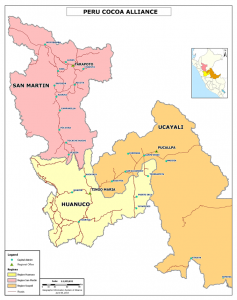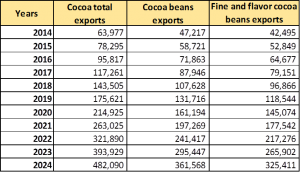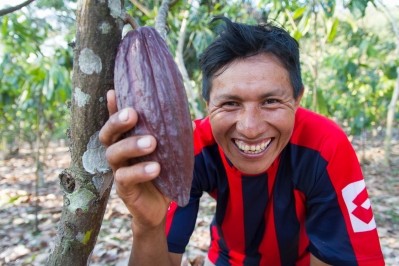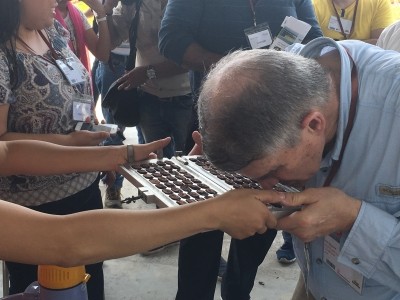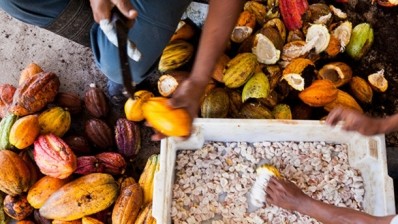Inca empire strikes back: Peru could dethrone Ecuador as leading global producer of ‘Fino de Aroma’ cocoa by 2020
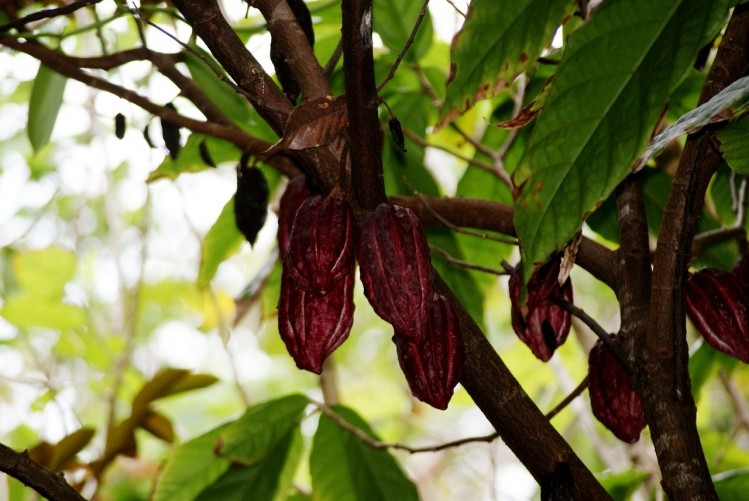
If the current growth rate of cocoa exports from Peru continues unaffected, the country’s booming cocoa sector could be exporting over 214,000 metric tons of cocoa in 2020, up from around 64,000 MT in 2014.
The estimate is based on a 22.4% growth rate of total cocoa bean exports, such as was recorded between 2009 and 2014, meaning that Peru could export 160,500 MT of cocoa beans in 2020, including 144,450 MT of fine and flavor cocoa. Namely, 75% of the country’s cocoa exports currently consist of cocoa beans and 90% of the cocoa bean exports originating from Peru are considered to be fine and flavor (Fino de Aroma) cocoa.
José Iturrios, director of the Peru Cocoa Alliance (PCO), told ConfectioneryNews: “Ecuador is currently exporting around 116,000 MT of fine and flavor cocoa. At this rate, Peru may be able to compete for the first place among fine and flavor exporting countries in just a few years. However, there is still a lot of work to be done.”
Price and exports
A comparison of conventional and fine and flavor cocoa prices is not straightforward and depends on several factors, including not easily quantifiable factors such as trust that exists between producer and buyer. The existence of this trust “helps build market niches less vulnerable to stock market fluctuations”, explained the PCO director.
When prices in the ordinary cocoa market (volume 3.2m MT) ranged between $2,000-$2,500 per MT, prices in the certified ordinary cocoa market (600,000 MT) ranged between $2,100 and $2,800 per MT, according to a recent presentation by the International Cocoa Organization’s (ICCO) director of economics and statistics Dr. Laurent Pipitone at The 3rd Cariforum EU Business Forum held in April in Jamaica.
At the same time, sellers in the ‘fine cocoa’ niche (210,000 MT), could get between $2,500 and $5,000 dollars per MT. At the very top of the pyramid is the high-end fine cocoa (12,000 MT) commanding prices between $5,000 and $10,000 per MT. Pipitone warned, however, that “due caution should be used in using these estimates as reference for commercial purposes”.
Today, the greater part of Peru’s cocoa production is exported with 70% of Peru’s cocoa exports carried out by 15 companies. The top five, Machu Picchu Foods, Exportadora ROMEX, Amazonas Trading, la Cooperativa Acopagro and Sumaqao, account for 50% of the total cocoa exported in all its forms. “These companies are the ones that have worked the hardest taking advantage of the rapid growth of cocoa production in Peru in the past five years,” said Iturrios.
Iturrios said it is not easy to obtain precise data on clients receiving these exports, “but we know that major chocolate companies in the world are using Peruvian cocoa to produce chocolate bars. Hershey, Italy’s ICAM, Tcho, Barry Callebaut, Equal Exchange, Alter Eco, Canada’s Camino, among others, purchase Peruvian cocoa either directly or through traders around the world”. Unfortunately, there still are no statistics that strictly differentiate fine and flavor and conventional cocoa exports from Peru.
Peru Cocoa Alliance
The PCO is a public-private partnership supported by the United States Agency for International Development, USAID, in alliance with the Government of Peru.
The main goals of the PCO are 28,000 ha of fine and flavor cocoa installed under agro-forestry system; 23,000 plots incorporated into traceability systems and 23,000 families benefiting from market-led value chains and/or access to finance, and leverage at least $49 million from the Alliance’s partners.
Table: Perú 2009-2014, Cacao Exports by categories | |||||||
Cocoa items | 2009 | 2010 | 2011 | 2012 | 2013 | 2014 | Annual growth rate 2009-2014 |
Chocolate | 1,564 | 1,804 | 1,579 | 1,306 | 1,785 | 1,945 | 4.5% |
Intermediate goods | 14,263 | 9,674 | 9,609 | 12,329 | 12,104 | 14,815 | 0.8% |
Cocoa beans | 7,478 | 11,323 | 20,264 | 26,819 | 31,298 | 47,217 | 44.6% |
Total cocoa exports | 23,305 | 22,801 | 31,453 | 40,453 | 45,186 | 63,977 | 22.4% |
[Source: ADEX DATA TRADE, Asociación de Exportadores del Perú (Peruvian Association of Exporters). Made by the Peru Cacao Alliance Monitoring and Evaluation area]
Gains in productivity and acreage
PCO’s cocoa area expansion model is based on giving producers a small incentive, mainly personalized technical assistance and fine and flavor cocoa genetic material for grafting, but the bulk of the installment investment is borne by the producers themselves.
“This has allowed us to install almost 8,000 hectares of fine and flavor cocoa a year in the last three years. These hectares have been geo-referenced thus allowing to begin the traceability process that will guarantee buyers a reliable source,” said Iturrios.
In 2014, around 100,000 hectares were harvested in Peru producing almost 76,000 MT of cocoa. “This gives us a productivity average of 760 kg/ha making us the country with the highest productivity average in the world. In 2005 we averaged 500 kg/ha. In some regions like San Martin the productivity average exceeds now 1,000 kilos per hectare,” declared the PCO director. In 2005 average yields amounted to 500 kg/ha.
Finally, the country has areas in which fine and flavor cocoa can be grown without affecting primary rainforests. “The Alliance's strategy relies on small producers and they occupy areas that have unfortunately already been deforested by illicit coca production, livestock or migratory farming. In the three regions alone in which the PCO intervenes there are 3.2 million hectares of deforested areas. Fine and flavor cocoa under agroforestry systems contribute to reforesting these areas,” explains Iturrios.
